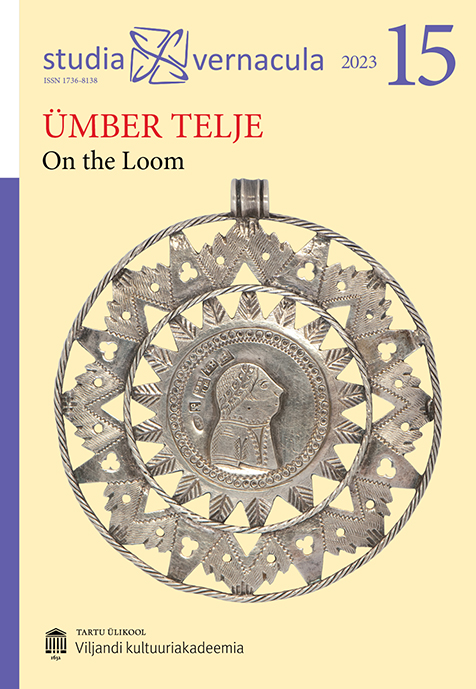Eesti–Norra villaprojekt innustab kohalikku toorainet paremini väärindama / Estonian–Norwegian wool project inspires to value local raw material better
DOI:
https://doi.org/10.12697/sv.2023.15.242-250Abstract
In March 2023, the two-year cooperation project “Estonian and Norwegian local sheep’s wool, conducting research and creating educational materials for textile students of higher education” came to an end. It was led by University of Tartu Viljandi Culture Academy (TÜ VKA; Astri Kaljus, Ave Matsin, Diana Tuulik). The partners were Tallinn University of Applied Sciences (Merje Beilmann, Diana Tuulik) and Muru Wool Mill (Liina Lehis) from Estonia, and the University of South-Eastern Norway (USN; Eli Wendelbo) and Selbu Spinneri AS (Marte Espelien Blomli, Ingvild Svorkmo Espelien) from Norway. The project was funded by the EEA / Norway
Cooperation Programme in Higher Education.
The project was motivated by the fact that local sheep wool is underused in Estonia. There is a lot of prejudice about its quality and most of the wool (85–90%) is not adequately valued or it is even destroyed as waste. In Norway, on the other hand, there is a very good system of buying and processing wool. The aim of the project was to investigate and test the quality and characteristics of wool from indigenous and most common sheep breeds in Estonia and Norway, and to create educational materials for textile students based on the findings. The wider aim of the project is to increase the targeted use of local wool in textile production. During the course of the project, three Estonian and three Norwegian sheep breeds were selected, the wool of which was used in further studies. Wool was collected from each breed, and from it yarn and knitted and woven fabrics were made, the properties of which were then tested.
As a result of the project, the education material “From Wool to Fabric. Estonian and Norwegian sheep’s wool as a textile material. Production, properties and possibilities of use on the example of the wool of six sheep breeds” was published. It is illustrated by educational videos, the first of which is on sheep shearing in Estonia (https://uttv.ee/naita?id=34448), the second on Norwegian wool (https://uttv.ee/naita?id=34489) and the third on the sorting of Estonian wool (https://uttv.ee/naita?id=34490). The educational material is freely available for educational purposes and can be used by anyone interested. It gives an overview of the general characteristics of wool, the processing procedure, and then focuses in more detail on the results of testing the collected wool and the yarns and textiles produced as a result of the project. The material can be found here: https://sisu.ut.ee/sites/default/files/eestivill/files/wool_to_fabric_a4_12_0.pdf.
It can be stated at the end of the project that the comparison of the wool from six sheep breeds and products made from it proved to be a much more multiplex and multifaceted research task than expected. The collection of wool from different sheep breeds showed that the characteristics and quality of wool within the same breed can vary greatly, depending on the genetic material, the sheep’s age or sex, rearing conditions, and the time of shearing. Properties of the fabric were also influenced by the parametres of the yarns used as well as the manufacturing technique. In any case, it would be important to continue with product development that takes into account the results of this study in order to establish connections between wool types, their processing, and the desired properties of the products. Small-scale local industry enables the development of different types of yarn from which innovative products can be developed. The development of new products based on the results of this project could even be the subject of new student theses and
projects.
In a broader perspective, the results of the project hopefully will contribute to the increased use of super-quality wool fibres that are a by-product of sheep husbandry, rather than the production of consumption of fossil-based textiles, since the use and sustainable valuing of natural craft materials contributes to solving environmental problems

